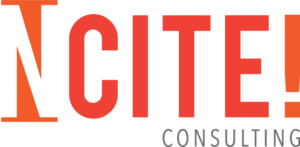I have a pop quiz for you today. Surprise!
What the heck is the purpose of a board self-assessment?
A: To ensure that boards are fulfilling their duties and responsibilities.
B: To check that appropriate processes are in place to ensure that boards are giving due diligence to planning and oversight over the organization.
C: To get a read on group dynamics.
D: All the above.
The answer is D! No one directly oversees the board, so it’s vital that the board take an annual objective look at themselves as individual directors and how they function as a group.
And, it’s a best practice. All board members are accountable to those they serve and it’s important for them to do the best job that they can during their board service.
![]()
Pro tip: The Governance Committee is normally tasked with ensuring that your board completes their annual board self-assessment. Make sure they know that it’s part of their responsibilities.
![]()
PREPARE & SET EXPECTATIONS
Let’s play fair. It would be difficult, if not impossible, to conduct an objective and adequate assessment of a board member’s progress if they weren’t aware of their expectations from the start. The board self-assessment process really has to begin the moment a new board director accepts a vacant board seat.
The best-case scenario is for the governance committee (or nominating committee) to talk through the board member’s responsibilities during the search and recruitment process. There’s no point in recruiting someone who isn’t even willing to meet the minimum board member requirements. The discussions about board member responsibilities should expand and continue throughout the selection process.
START WITH BASIC RESPONSIBILITIES
The orientation is the best time to provide a written job description for the board member position to the new nominees. Board members should understand that they’re expected to read all board meeting materials thoroughly and come to the meeting prepared to ask questions and participate in discussions. They should also either be directed to serve on a committee or receive a committee assignment. Along those lines, they should also be clear on their duties and responsibilities as committee members.
Board members should be informed at the orientation or early in the process that fundraising is a priority and that they are expected to participate. They should also be aware that they’re expected to contribute some of their own funds to nonprofits on an annual basis.
All board members should be clear on their goals and expectations. Why? So there are no surprises at the annual self-evaluation time. Use the time to assess what is and isn’t working. You can also use the time for future goal-setting, so that board members are more invested in the organization and its success.
![]()
Pro tip: Assign a board member to support and guide new board members through the first year of board service.
![]()
ASSESSMENT BUILDS TRUST & IMPROVEMENT
While much of a board’s work is done behind the scenes, the work they do and the decisions they make have a far-reaching effect. One important issue that boards can address through board self-assessments is to ensure that board members don’t have any current or impending conflicts of interest.
Donors, clients, vendors and entire communities falter when board directors fail to perform at their highest capability. It’s vital that boards take the necessary time to do an annual self-assessment of their performance to look for opportunities to improve.
EVALUATING THE BOARD’S FUNCTIONING AS A GROUP
Board members work individually to fulfill their duties. BUT, it’s equally important for the group to function well as a whole. Group dynamics have everything to do with board function.
The manner in which board members interact with one another has a major impact on their effectiveness. Board members should be evaluated not only on the knowledge and expertise that they bring into the boardroom, but also how well prepared they are at meetings and how well they interact with other board members.
Positive boardroom behavior means that board members are asking the right questions, framing their comments and questions in a constructive manner, and building on the comments and opinions of their peers. Board members should be evaluated on their ability to remain objective rather than to allow personal or past experiences to dominate their perspective.
Board members should also be evaluated on their understanding of the differences between their role and management’s role. For example, can board members support and guide managers effectively without overstepping their role of oversight and micromanaging them?
Boards would be remiss in failing to consider the interpersonal and group dynamics among board members. This part of the evaluation should be as rigorous and objective as possible. Facilitators of the process should encourage an environment of mutual respect, honesty and trust as they work through topics of board dynamics. It’s important to thoroughly assess such topics as group thinking, open-mindedness, acceptance of dissenting opinions and addressing issues of board director ineffectiveness. Some boards find that they get the most objective results when they ask a third party to facilitate their board self-evaluation.
BOARD ASSESSMENT- THE TAKEAWAY
Here’s the takeaway, folks: the board self-evaluation should have a positive, encouraging tone that helps to set the stage for a healthy, eager and energized board. An impactful and viable board self-assessment process leaves board asking themselves how they can improve and what more they could be doing. This is the outcome that boards should be striving to achieve.
Need help getting started? Schedule a call with me and we’ll work together to get you on the right track to a solid and meaningful evaluation process.


